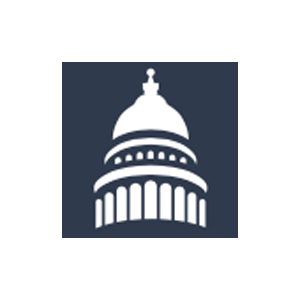
House Passes Bill to Fix PPP, Provide Flexibility For Small Businesses
May 28, 2020
The House on Thursday passed legislation to make it easier for small businesses to have their PPP loans forgiven, including extending the timeframe during which businesses must use funds and easing requirements on how the funds can be used.
The Paycheck Protection Program (PPP) Flexibility Act, authored by Rep. Dean Phillips (D-Minn.) and Rep. Chip Roy (R-Texas), passed by an overwhelming 417-1 bipartisan vote. All of Utah’s representatives supported the legislation. The only “no” vote on the PPP legislation was Representative Thomas Massie (R-Ky.) who has maintained that the House should convene in person. The bill now moves to the Senate where similar legislation has been introduced. Although it’s unclear when the Senate will act, the hope is to have changes enacted before the first PPP loan recipients reach their deadline in early June.
Initially, the program required small businesses to spend their loan over an eight-week period following receipt of funds in order to qualify for loan forgiveness. In addition, 75% of the loan had to be used for payroll costs. Although intended to keep employees on the job, businesses found these restrictions unrealistic given that many remain closed or are operating on a limited bases due to extended stay-at-home orders.
Key provisions of the new legislation include:
- Extends the current covered period for applying for loans from June 30, 2020 to December 31, 2020.
- Extends the current eight-week period for spending loan funds to 24 weeks from the date loans are funded or December 31, 2020, whichever comes first.
- Lowers to 60% from 75% the portion of PPP funds borrowers must spend on payroll costs to qualify for full loan forgiveness. That change would allow borrowers to direct more funds to overhead costs, such as rent and utilities.
- Extends the current June 30 deadline to hire workers back to December 31, 2020.
- Increases the minimum term period for the loans from two years to five years, with a maximum term of 10 years. Lenders and borrowers can agree to adjust existing loans.
- Borrowers will qualify for employer payroll tax deferral regardless of whether their PPP loan is forgiven.
- Borrowers that received loans prior to the bill can elect to retain the eight-week covered period.
- Certain exemptions are provided to the FTE requirements, including an exemption if the borrower can demonstrate that the business is unable to return to the same level of activity that it was operating at prior to February 15, 2020.
While Congress has been contemplating changes to PPP loan requirements, last week the Treasury Department issued two new interim final rules addressing requirements for loan forgiveness and PPP loan review procedures and borrower/lender responsibilities .
Congress has provided a total of $659 billion to small businesses in PPP loans since the program was first enacted as part of the CARES Act. As of May 23, the SBA had approved nearly 4.5 million PPP loans totaling more than $510.5 billion. More than $135 billion in PPP funds remain available.
Recent News
- CivicaScript® launches low-cost treatment to improve walking for people with multiple sclerosis
- HUNTSMAN MENTAL HEALTH INSTITUTE CELEBRATES 10 YEARS OF BEHAVIORAL HEALTH INTEGRATION PROGRAM
- SINTX Technologies Issues Business Update Following Strategic Realignment, Leadership Expansion, and SiNAPTIC Acquisition
- First Patient Enrolled in Merit Medical’s WRAPSODY (WRAP) North America Registry
- Shedding Light On Cardiac Repair: How Red-Light Preconditioning Improves Cell Therapy
- Owlet® Achieves TGA Certification for Dream Sock™, Paving the Way for Launch in Australia and New Zealand











